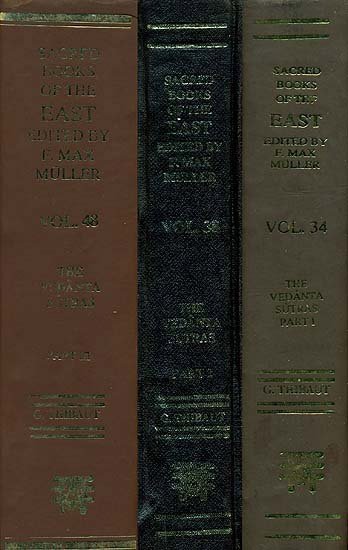Brahma Sutras (Ramanuja)
by George Thibaut | 1904 | 275,953 words | ISBN-10: 8120801350 | ISBN-13: 9788120801356
The English translation of the Brahma Sutras (also, Vedanta Sutras) with commentary by Ramanuja (known as the Sri Bhasya). The Brahmasutra expounds the essential philosophy of the Upanishads which, primarily revolving around the knowledge of Brahman and Atman, represents the foundation of Vedanta. Ramanjua’s interpretation of these sutras from a V...
Sutra 1.2.29
29. Jaimini thinks that there is no objection to (the word 'Agni') directly (denoting the highest Self).
So far it has been maintained that the word 'Agni,' which stands in co-ordination with the term 'Vaiśvānara,' denotes the highest Self in so far as qualified by the intestinal fire constituting its body; and that hence the text under discussion enjoins meditation on the highest Self. Jaimini, on the other hand, is of opinion that there is no reasonable objection to the term 'Agni,' no less than the term: 'Vaiśvānara,' being taken directly to denote the highest Self. That is to say—in the same way as the term 'Vaiśvānara,' although a common term, yet when qualified by attributes especially belonging to the highest Self is known to denote the latter only as possessing the quality of ruling all men; so the word 'Agni' also when appearing in connexion with special attributes belonging to the highest Self denotes that Self only. For any quality on the ground of which 'Agni' may be etymologically explained to denote ordinary fire—as when e.g. we explain 'agni' as he who 'agre nayati'—may also, in its highest non-conditioned degree, be ascribed to the supreme Self. Another difficulty remains. The passage (V, 18, 1) 'yas tv etam evaṃ prādeśamātram abhivimānam,' etc. declares that the non-limited highest Brahman is limited by the measure of the pradeśas, i.e. of the different spaces-heaven, ether, earth, etc.—which had previously been said to constitute the limbs of Vaiśvānara. How is this possible?
